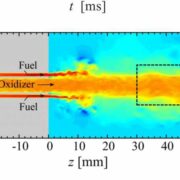Even if it was possible, a special machine to allow humans to travel to a different point and time in the universe through a tunneled wormhole still seems far to attain.

The favorite spaceflight maneuvers in and out of a wormhole of science-fiction fables might be more real than we thought. Physicists initially didn’t know whether black holes existed within the world. Over the years, they said black holes are very real then showed they even exist in our galaxy, using the idea of general theory of relativity, which predicts that a sufficiently compact mass can deform space-time to make a region. This same theory is now getting used to suggest wormholes — speculative tunnels that would create shortcuts for journeys across the universe could even be real, which might make it tons easier to traverse the universe.
Physicists Juan Maldacena from the Institute for Advanced Study within the US and Alexey Milekhin from the Princeton University have found a way that would produce large holes. The 2 physicists have argued that the Randall-Sundrum II model allows for traversable wormhole solutions, where the wormholes are large enough that an individual could traverse them and survive.
Though their research, published in APS Physics journal, is progress on previous studies on wormholes, a special machine to permit humans to visit a special point within the universe through wormholes still seems distant. The 2 physicists want the mysterious substance in our universe to behave during a particular way for his or her discovery to succeed.
“We have a limited toolbox,” says Brianna Grado-White, a physicist and wormhole researcher at Brandeis University. “To get something to seem the way we’d like it, there’s only numerous things we will do thereupon toolbox.”
The idea of a wormhole to make a bridge between two universes was first described by physicists Einstein and Nathan Rosen in 1935. In theory, they found that a black hole’s surface might work as a bridge to a second patch of space. Since then, many others imagined wormholes and said a number of them could be “traversable”, meaning humans could also be ready to travel through them. But these ideas were limited by two challenges: fragility of those tubes and their tininess.
In late 2017, physicists found a breakthrough to prop open wormholes with quantum entanglement — a sort of long-distance connection between quantum entities. This new approach inspired a stream of labor aimed toward creating bigger, longer-lasting holes.
Physicists Lisa Randall and Raman Sundrum had proposed the Randall–Sundrum models in 1999 to deal with the Higgs Hierarchy Problem in Problem in particle physics.

























